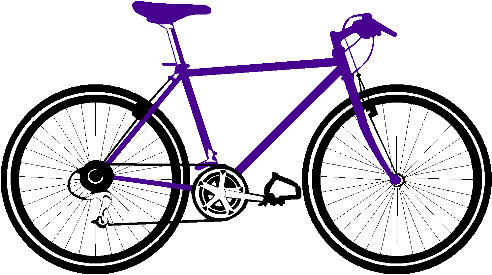
You're at: https://57296.neocities.org/bikes-n-trikes.html
(last worked on: August 14th, 2019)

* This web page was started in order to find answers to that perpetual question: "Why is it easier to walk a bicycle up a hill?"
* It is assumed that we all agree: the energy required to reach the top of the hill is the same both ways, but the physiological energy expended (calories burned) might be significantly different.
Here are the most reasonable answers that I've run across --numbered for reference, but in no particular order (yet):
1) Because your walking muscles and gait are more highly evolved than your bicycling muscles.
2) Because your bicycling muscles are already tired, but your walking muscles aren't --so it just seems easier.
3) The force applied to the chain and sprockets goes up --and that makes the friction go up.
4) The effort to keep the bike balanced goes up as the bike gears down and slows down, since the gyroscopic assist of the wheels is lost. (The stability of a high profile tricycle, or the traffic hazard of a low slung "recumbent" 3-wheeler is indicated --but: if you still have to get off, walking a short wheel base trike is brutal. Short of hailing a pickup truck, road rescue by motor vehicle is also problematic.)
5) Folks simply don't use all those gears --too much trouble. Shifting is harder when climbing a grade, plus the derailery is often out of adjustment, poorly lubed, and dirty --so we worry that the chain might jump off. Consequently, bicyclists often try to peddle way too hard and let their stroke/cadence rate fall off (to lower than one peddle per second), then the speed fall-off at crank "dead center" (6 and 12 o'clock) becomes really aggravating. (The limited range of a Sturmey-Archer 3-speed might be better for modest inclines.) (From long ago there've have been bicycles with an enclosed drive shaft, rather than an exposed chain, sprockets and derailer mechanisms.)
6) There's no resting/coasting when going up a hill --brutal!
7) The cooling breeze greatly diminishes, so the hill whammy is doubled.

![]()